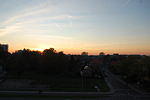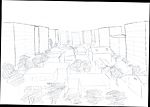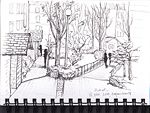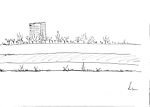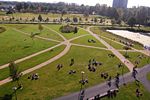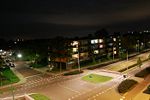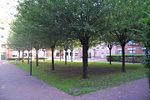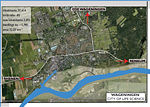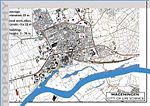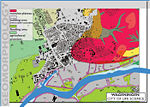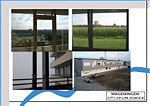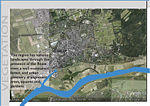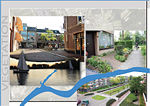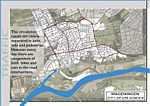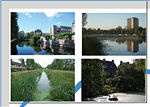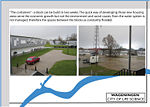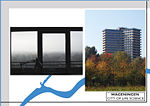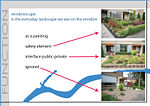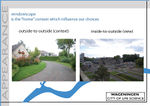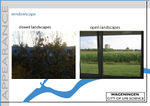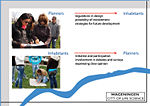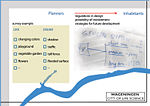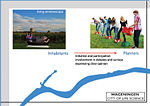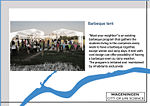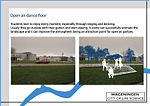Windowscape: Difference between revisions
Oana Baloi (talk | contribs) |
Oana Baloi (talk | contribs) |
||
| (62 intermediate revisions by 2 users not shown) | |||
| Line 1: | Line 1: | ||
---> back to overview of [[Everyday_Landscapes_Seminar_Case_Study_List|Case Study List]] | ---> back to overview of [[Everyday_Landscapes_Seminar_Case_Study_List|Case Study List]] | ||
{| align="right" width="300pt" style="background:Gainsboro; color:black" | {| align="right" width="300pt" style="background:Gainsboro; color:black" | ||
|- | |- | ||
| ''' | | '''Name''' ||style="background:Lavender"| ''Windowscape'' | ||
|- | |- | ||
| ''' | | '''Location''' || style="background:Lavender"|''Wageningen'' | ||
|- | |- | ||
| ''' | | '''Country''' || style="background:Lavender"|''The Netherlands'' | ||
|- | |- | ||
| ''' | | '''Authors''' || style="background:Lavender"|''Oana Baloi'' | ||
|- | |- | ||
| colspan="3" align="center" style="background:silver"| [[Image:Moa.jpg|300px]] | | colspan="3" align="center" style="background:silver"| [[Image:Moa.jpg|300px]] | ||
| Line 19: | Line 16: | ||
|- | |- | ||
| colspan="3" align="center" style="background:silver"| <googlemap version="0.9" lat="38.694621" lon="1.471481" type="satellite" zoom="11" width="300" height="250"> | | colspan="3" align="center" style="background:silver"| <googlemap version="0.9" lat="38.694621" lon="1.471481" type="satellite" zoom="11" width="300" height="250"> | ||
38.694621, 1.471481 | |||
</googlemap> | </googlemap> | ||
|} | |} | ||
== Short Introduction to the Area of Study == | ==Short Introduction to the Area of Study== | ||
Wageningen is a small city within The Netherlands with fast increasing number of inhabitants due to the presence of academic and research activity in the domains of life science. Everyday landscape relates to land usage and planning, in relation to spatial issues of daily activities of the inhabitants. Every space has its own story. Living a story through landscape gather the human perception over the landscape from the early morning landscape seen on the dorm window, to the view from the offices windows, and nevertheless, the landscape in between. | |||
The present study aims to gain knowledge about the human perception over the landscape by investigating the meaning of landscape seen in the window frame of their everyday activities. The specific research questions include the usage, perception and engagement of different people to their everyday landscape. | The present study aims to gain knowledge about the human perception over the landscape by investigating the meaning of landscape seen in the window frame of their everyday activities. The specific research questions include the usage, perception and engagement of different people to their everyday landscape. | ||
The subject interact with the functions of a sustainable urban plan, assessing the landscape for the comfort of inhabitants. Therefore, the study represents a research over the reasonable and comfortable everyday landscape, from the point of view of the users | The subject interact with the functions of a sustainable urban plan, assessing the landscape for the comfort of inhabitants. Therefore, the study represents a research over the reasonable and comfortable everyday landscape, from the point of view of the users | ||
== Exercise 1: Sketching the Landscape == | == Exercise 1: Sketching the Landscape == | ||
| Line 33: | Line 31: | ||
* Creation of analytical drawings and sketches | * Creation of analytical drawings and sketches | ||
* Presentation of results | * Presentation of results | ||
The most often appreciated painting is the painting we see everyday in the frame of our window. Forever changing in colors and characters, the windowscape may differ in preference, in perception and in importance for the owner. Though the view on the window directly influences the economic income in real estate development, the preference for window landscape is sometimes limited by architectural objects, living facilities and urban development landscapes without considering the importance of the windowscape. | |||
''The most often appreciated painting is the painting we see everyday in the frame of our window. Forever changing in colors and characters, the windowscape may differ in preference, in perception and in importance for the owner. Though the view on the window directly influences the economic income in real estate development, the preference for window landscape is sometimes limited by architectural objects, living facilities and urban development landscapes without considering the importance of the windowscape. | |||
The view from the window is an issue frequently neglected in contemporary urban development. The sketches presented illustrates the widowscapes of different persons, made by them self. | The view from the window is an issue frequently neglected in contemporary urban development. The sketches presented illustrates the widowscapes of different persons, made by them self. | ||
The interpretation of the landscape that we see everyday is constantly influenced by the way we perceive the outdoor elements that build everyday experience. For instance a massive architectural front dominating the horizon gives enclosure and limitation to the perceiver, feeling translated very clear in the sketches. However, the dominance of the nature seems to be more important in human size appreciation, while from the tower living blocks, the flat land of The Netherlands seems to smash to the ground the nature together with the architecture. Particularly in Wageningen, the layer approach to the landscape is easily understood in everyday living experience. The coherence and legibility of the landscape makes it easy to be decoded by ordinary people. The coherence and legibility of the landscape makes it easy to be decoded by ordinary people. The layers of circulation, water and vegetation are coherent, with a strong accent on functionality of the spaces. The most important element is familiarity and attachment for certain views, for example large openings, or dense vegetation. Also preferences of interviewed people include the presence of light and sun as important in describing their everyday landscape. Environmental and physic elements have their own influence in building the ‘home’ space outside the window. | |||
The | |||
‘Wherever I move, it seems that I always have a tree outside my window. I like that ..’ (quote: a facebook status) | |||
The particularities of the view outside the window influence our preference and our attachment for a certain landscape. The windowscape is important both for inhabitants and for real estate developers. '' | |||
=== Sketches and Drawings === | |||
<gallery caption=" " widths="150px" heights="150px" perrow="5"> | <gallery caption=" " widths="150px" heights="150px" perrow="5"> | ||
Image: | Image:DSC1005.JPG|My everyday window-landscape | ||
Image:schita 1 buc Mihai Toader.JPG|window-landscape in Bucharest | Image:schita 1 buc Mihai Toader.JPG|window-landscape in Bucharest | ||
Image:schita 2 buc Octav.jpg|another windowlandscape in Bucharest | Image:schita 2 buc Octav.jpg|another windowlandscape in Bucharest | ||
| Line 54: | Line 53: | ||
Image:Wageningen infrastructure.jpg|Infrastructure | Image:Wageningen infrastructure.jpg|Infrastructure | ||
Image:Wageningen proximity space.jpg|Decoding the windowscape | Image:Wageningen proximity space.jpg|Decoding the windowscape | ||
</gallery> | </gallery> | ||
| Line 63: | Line 58: | ||
'''Time frame: November 15 - 29, 2011''' | '''Time frame: November 15 - 29, 2011''' | ||
Landscape layers make the landscape readable. Regarding the "windowscape" it is important for the viewer to understand and to be attracted to the landscape beyond the window. Layers as topography, water-structure and build fund are first elements in decoding the landscape. Of course those are followed by certain preferences for each individual regarding noise, shadow, closed/open space. | |||
The number of students coming in Wageningen grows every year. Therefore the expansion is produced quick. Different real-estae companies challenge each other in finding insightful solutions for providing shelter for students. From 20 floors blocks to containers, the buildings have an big variety of form, height and windowscape. The view outside the window is in many cases what convince a person to rent a room, or sometimes is just a interface between outside`s openness and the closure of small rooms. | |||
The city have visible areas of historical development, of periods in time that have marked the image of the city from building distinctive identity for the centre of the city, the new expansions from margins and for the spaces in between. The system of surface water and typical architecture are two most important identity elements of the city. | |||
<gallery caption=" " widths="150px" heights="150px" perrow="5"> | <gallery caption=" " widths="150px" heights="150px" perrow="5"> | ||
Image: | Image:Presentation-OK.jpg|The city of Wageningen has a continuously increasing number of inhabitants to the presence of University and Research Centre. The number of students and researchers within the University reach 7000. | ||
Image: | Image:Topography-OK.jpg|Every year 4000 new inhabitants come to Wageningen while almost 2000 leave the city. The living period for studies and research is between 2 and 5 years, therefore the city has to offer accommodation facilities that could be “home” for long term. | ||
Image: | Image:Geomorphology-OK.jpg|The city is continuously expanding leading to a decreasing number of permeable surfaces. From West to East, the soil layers are less fertile, therefore less used for agriculture and urban agriculture practices. Within the city the permeability reached 0 in certain places and squares or proximity spaces. | ||
Image: | Image:built fund.jpg|The city centre has a urban layer dominated by P+3 heights, with public spaces covered mostly by concrete. Public space consume is realized through a shopping street, cafes and open market. | ||
Image: | Image:Build-fund-m.jpg|In the areas surrounding the centre are private houses with average height of P+1. New expansion areas have different heights using the space in between as private-public squares. | ||
Image:Vegetation.jpg|As an ecology promoting area, it consist of different landscapes with the presence of the river Rhine, the city and the green structure formed by the forest, agricultural fields and transitory green spaces. Penetration of green arrows within the city improves the quality of the landscape, getting closer to the centre of the city the quantity of greenery decreases | |||
Image:Vegetation-2.jpg|In the city centre, the landscape is dominated by concrete. The dominant layout of dorm neighborhoods contains houses with small gardens in front and in the back of the house. The expansion of the city is visible in different new developed areas at the edge of the city which have a clear modern expansion aspect: from containers to expensive family houses. | |||
Image:Traffic.jpg|Wageningen is a city dominated by bicycles. However the usage of car is strongly discouraged though streets disposition themselves. The blockages are formed regularly in the morning and in the evening on the main roads. Also, every morning in the morning there are congestions of bicycles in the intersection near the University, only between 8:00-8:30. | |||
Image:Water-system.jpg|The water management is very important for the save living. The presence of canals is compulsory for soil drainage in order to be usable. However in the living area, the number of canals decreases dramatically. The small surface water within the city is used for landscape purposes. | |||
Image:Imag_water.jpg|The surface water is used in the landscape as canals and lakes. The presence of water is important in the landscape development as a basic layer for the image of the city, having importance also in the perception of the landscape as "beautiful" | |||
</gallery> | </gallery> | ||
| Line 81: | Line 83: | ||
'''Time frame: December 6 - 20, 2011''' | '''Time frame: December 6 - 20, 2011''' | ||
There are different typologies of inhabitants, different perception over the landscape and different usage of the spaces next to the buildings people live/work in. The general planning of the city respect the right to an open landscape for the inhabitants. Moreover, the image of the city is well maintained and developed within the city. A different situation appears instead in the expansion areas where from the urgent need for new housing facilities impose a fast building process losing the attention over the landscape as a context and also as a perception for future inhabitants. The income is the majoritary condition for having a qualitative* windowscape. Thus having a big garden or a big terrace with a nice panorama depends of the possibility of buying a house or paying the rent. | |||
The number of students increases year by year. Recently the real estate companies have in the situation of accommodating a big number of students, therefore new housing facilities started to be fast developed. A particular example is Haarveg 333 (figure 1), the containers, where though it is one of the expensive student facilities, there is no landscape context and no common space for the inhabitants, not even a corridor. On the opposite corner, one of cheapest housing facilities for students, there are the 20 floors height blocks, where students benefit of both common space for inhabitants and also a view (figure 2). | |||
The windowscape refers to the context of “home” but also how the landscape is seen and perceived from the inside. The windowscape is presented through two classifications: appearance and function. | |||
* Function. | |||
The behavior of the inhabitants over the windowscape can be understood by naming several ways people perceive the role of the window/ the windowscape. The clasificaltion is made in function of the importance of the landscape for the inhabitants, specifically the windowscape. The windowscape can be: a painting, a continuity of personal space, a safety element, an interface between private and public and the ignored landscape(figure 3). | |||
The painting. The image from the window is a painting that does not change or the changes are minimal – for example concrete landscape there the changing element is the dynamism of a street. Thus, the windowscape can be visible (appreciated, valued through interior design) or absent (ignored, hidden behind the curtains). | |||
Safety element. The landscape next to the window can be surrounded by fences, trees or other elements that offer the perception of safety to individuals. Often, the window is seen as light source, the landscape itself is less important. In this case, the space surrounding the window, the house, is the safety area that gives the feeling of familiarity and comfort*. | |||
The interface between private and public space. The window is the eye to outside, as for checking the weather, checking if the car is still in the parking or the bike in the racks. The window gets the function of a porch. It is the place where you are inside and outside in same time. Where you are save but still exposed. | |||
Ignored. The ignored windowscape refers to the windows hidden behind the curtains or behind a closet. The window has nothing to offer except closure and often a wall of the building in front of it. It is often a window from the ground floor, from the room of a night worker or from a room with undesired view. Usually is a window from a room with more than two windows to the outside. | |||
* Appearance. | |||
The aesthetics of the windowscape is important not only in choosing a house, a room, a building or an office. The appearance refers to the outside-to-outside seen landscape with the building integrated in a certain context. The second important aesthetic element is the view inside-to-outside, named in present study- windowscape(figure 4). The appearance of the windowscape can be closed and open, as two main important aesthetic characteristics(figure 5). | |||
Close landscapes are seen frequently in the centre of the city and in the surrounding areas. The examples are numerous: buildings with front yard and backyard, where windowscape is frequently designed by the owners themselves; the windowscape to a square, a street or a proximity space, where the design is made by private or public services, but the dominant element is concrete, stone or gravel. The closure characteristic is represented by the dimensions of the garden, often surrounded by fences – in the case of the gardens, or by the small dimensions of public space in the second example. The perception of an enclosed space can be safety though the coherence of the space that is visual accessible and easy readable. | |||
Open landscapes are the windowscapes that offer a large view or an open space over the outside. Terraces, upper floors, big gardens and infinite landscapes next to the window are several examples. One of the benefits of an open landscape is that the private space from the inside appear larger, therefore the perception of a welcoming and comfortable place is often exploited in real estate. A landscape, especially a windowscape – as everyday experience, offer perception of complexity through distinctive elements, compatibility with individual expectations (Karplan&Karplan, 1989), to achieve individual`s self esteem offering possible meaningful favorite places (Breakwell, 1986). Thus, the windowscape is not only a large view on the outside, it is perceived and identified as home. | |||
In conclusion, considering the windowscape as an everyday landscape it is important to maintain the right for a landscape of the inhabitants, highlighting spaces that identify themselves though their appearance and also though the way people perceive and interpret the landscape. Everyday landscape have a major importance in contemporary expansion of cities, therefore windowscape can influence the sales of the real estate companies and the welfare of the present and future inhabitants. | |||
''Please publish your findings here'' | ''Please publish your findings here'' | ||
<gallery caption=" " widths="150px" heights="150px" perrow="5"> | |||
Image:Containers_correct.jpg|The containers | |||
Image:Tower_blocks.jpg|Tower blocks | |||
Image:Function_w.jpg|"How do you see the windowscape?" | |||
Image:Appearance1.jpg|Windowscape as a context and as a view | |||
Image:Appearance2.jpg|Open and closed windowscape | |||
</gallery> | |||
== Exercise 4: Communication Concepts == | == Exercise 4: Communication Concepts == | ||
'''Time frame: December 19, 2011 - January 17, 2012''' | '''Time frame: December 19, 2011 - January 17, 2012''' | ||
The communication concept is based on the relation between the planners and the inhabitants. If in the process of developing new living areas there are certain expectations for the image of the product, the windowscape as a view do dot benefit of similar attention in design, especially in the context of quick expansion or densification. Therefore the initiative should pursuit the achievement of comfort and familiarity for the inhabitants through “Do it yourself” type of actions. The initiative and participation of inhabitants should draw the attention over their needs for usable and beautiful landscape. The common or individual participation aim to build the wanted landscape and even though the appearance may not fulfill design concepts it will have a certain meaning for the inhabitants being build by themselves. | |||
The concept of building windowscape refers to the process of “home” building through significance, memory and care for the landscape. The interventions should be approved by administration and future development should include windowscape development including the involvement of the future inhabitants. The communication can be made through public debates regarding the common will of the inhabitants, preferably together with a landscape architect. The interventions should respect the will of the persons that will be affected in any way by the landscape modifications in their windowscape. Main attraction points will be common areas for different activities and landscape designs changeable each season. The rapport of communication form specialists to the users of the space should include well determined regulations in design considering the perception of the windowscape over their everyday life. The communication is relied on regulations in design, possibility of in involvement for the users, and strategies of future involvement. The regulations in design refer to the development of science and research. Therefore the literature and consumer research are important before the development in order to develop a “home” that could satisfy the “feelings of security, stimulation and self-direction” (Kathrin Hering, 2006). | |||
<gallery caption=" " widths="150px" heights="150px" perrow="5"> | <gallery caption=" " widths="150px" heights="150px" perrow="5"> | ||
Image: | Image:Communication1_2.jpg|Two directions of communication: first one from the planners to the inhabitants or future inhabitants and the second one from the inhabitants to the planners | ||
Image: | Image:Communication2_3.jpg|Communication from planners: relied on regulations in design, possibility of in involvement for the users, and strategies of future involvement | ||
Image: | Image:Communication2_4.jpg|Communication from inhabitants: initiative | ||
Image: | Image:Communication1_tent.jpg|Communication from inhabitants: "do it yourself" type of action, example: barbeque tent | ||
Image: | Image:Communication2_scene.jpg|Communication from inhabitants: "do it yourself" type of action, example: dance floor | ||
</gallery> | </gallery> | ||
| Line 116: | Line 143: | ||
<gallery caption=" " widths="150px" heights="150px" perrow="5"> | <gallery caption=" " widths="150px" heights="150px" perrow="5"> | ||
Image:yourimagename.jpg|your image text | Image:yourimagename.jpg|your image text | ||
Image:yourimagename.jpg|your image text | Image:yourimagename.jpg|your image text | ||
| Line 124: | Line 150: | ||
== References == | == References == | ||
Environmental psychology in building design, John Brebnerm Applied Science Publishers LTD London, 1982 | |||
Environmental Psychology, Paul A. Bell, Thomas C. Greene, Jeffrey D. Fisher, Andrew Baum, Harcourt College Publishers, 2001 | |||
Landscape Needs and Notions, Katrin Gehring, Swiss Federal Research Institute WSL, 2006 | |||
Psychology and Environmental Change, Raymond S. Nickerson, Psychology Press, New York, 2002 | |||
Redesigning the Ketelwald. Research on fundamental attitudes, images of nature and authenticity, Renee Pryce, 2006 | |||
---- | ---- | ||
[[Category:Case Study]] | [[Category:Case Study]] | ||
[[Category:Everyday Landscapes Case Study]] | [[Category:Everyday Landscapes Case Study]] | ||
[[Category:Everyday Landscapes Working Group | [[Category:Everyday Landscapes Working Group | ||
[[Category:Everyday Landscapes | [[Category:Everyday Landscapes Parks and Gardens]] | ||
About categories: You can add more categories with this tag: "[[Category:Category Name]]", add your categories | About categories: You can add more categories with this tag: "[[Category:Category Name]]", add your categories | ||
Latest revision as of 21:54, 7 February 2012
---> back to overview of Case Study List
Short Introduction to the Area of Study
Wageningen is a small city within The Netherlands with fast increasing number of inhabitants due to the presence of academic and research activity in the domains of life science. Everyday landscape relates to land usage and planning, in relation to spatial issues of daily activities of the inhabitants. Every space has its own story. Living a story through landscape gather the human perception over the landscape from the early morning landscape seen on the dorm window, to the view from the offices windows, and nevertheless, the landscape in between. The present study aims to gain knowledge about the human perception over the landscape by investigating the meaning of landscape seen in the window frame of their everyday activities. The specific research questions include the usage, perception and engagement of different people to their everyday landscape. The subject interact with the functions of a sustainable urban plan, assessing the landscape for the comfort of inhabitants. Therefore, the study represents a research over the reasonable and comfortable everyday landscape, from the point of view of the users
Exercise 1: Sketching the Landscape
Time frame: October 25 - November 15, 2011
Student activities:
- Creation of analytical drawings and sketches
- Presentation of results
The most often appreciated painting is the painting we see everyday in the frame of our window. Forever changing in colors and characters, the windowscape may differ in preference, in perception and in importance for the owner. Though the view on the window directly influences the economic income in real estate development, the preference for window landscape is sometimes limited by architectural objects, living facilities and urban development landscapes without considering the importance of the windowscape. The view from the window is an issue frequently neglected in contemporary urban development. The sketches presented illustrates the widowscapes of different persons, made by them self.
The interpretation of the landscape that we see everyday is constantly influenced by the way we perceive the outdoor elements that build everyday experience. For instance a massive architectural front dominating the horizon gives enclosure and limitation to the perceiver, feeling translated very clear in the sketches. However, the dominance of the nature seems to be more important in human size appreciation, while from the tower living blocks, the flat land of The Netherlands seems to smash to the ground the nature together with the architecture. Particularly in Wageningen, the layer approach to the landscape is easily understood in everyday living experience. The coherence and legibility of the landscape makes it easy to be decoded by ordinary people. The coherence and legibility of the landscape makes it easy to be decoded by ordinary people. The layers of circulation, water and vegetation are coherent, with a strong accent on functionality of the spaces. The most important element is familiarity and attachment for certain views, for example large openings, or dense vegetation. Also preferences of interviewed people include the presence of light and sun as important in describing their everyday landscape. Environmental and physic elements have their own influence in building the ‘home’ space outside the window.
‘Wherever I move, it seems that I always have a tree outside my window. I like that ..’ (quote: a facebook status) The particularities of the view outside the window influence our preference and our attachment for a certain landscape. The windowscape is important both for inhabitants and for real estate developers.
Sketches and Drawings
Exercise 2: Landscape Layers
Time frame: November 15 - 29, 2011 Landscape layers make the landscape readable. Regarding the "windowscape" it is important for the viewer to understand and to be attracted to the landscape beyond the window. Layers as topography, water-structure and build fund are first elements in decoding the landscape. Of course those are followed by certain preferences for each individual regarding noise, shadow, closed/open space. The number of students coming in Wageningen grows every year. Therefore the expansion is produced quick. Different real-estae companies challenge each other in finding insightful solutions for providing shelter for students. From 20 floors blocks to containers, the buildings have an big variety of form, height and windowscape. The view outside the window is in many cases what convince a person to rent a room, or sometimes is just a interface between outside`s openness and the closure of small rooms. The city have visible areas of historical development, of periods in time that have marked the image of the city from building distinctive identity for the centre of the city, the new expansions from margins and for the spaces in between. The system of surface water and typical architecture are two most important identity elements of the city.
The city is continuously expanding leading to a decreasing number of permeable surfaces. From West to East, the soil layers are less fertile, therefore less used for agriculture and urban agriculture practices. Within the city the permeability reached 0 in certain places and squares or proximity spaces.
As an ecology promoting area, it consist of different landscapes with the presence of the river Rhine, the city and the green structure formed by the forest, agricultural fields and transitory green spaces. Penetration of green arrows within the city improves the quality of the landscape, getting closer to the centre of the city the quantity of greenery decreases
In the city centre, the landscape is dominated by concrete. The dominant layout of dorm neighborhoods contains houses with small gardens in front and in the back of the house. The expansion of the city is visible in different new developed areas at the edge of the city which have a clear modern expansion aspect: from containers to expensive family houses.
Wageningen is a city dominated by bicycles. However the usage of car is strongly discouraged though streets disposition themselves. The blockages are formed regularly in the morning and in the evening on the main roads. Also, every morning in the morning there are congestions of bicycles in the intersection near the University, only between 8:00-8:30.
Please publish your findings here
Exercise 3: Behaviour Patterns
Time frame: December 6 - 20, 2011
There are different typologies of inhabitants, different perception over the landscape and different usage of the spaces next to the buildings people live/work in. The general planning of the city respect the right to an open landscape for the inhabitants. Moreover, the image of the city is well maintained and developed within the city. A different situation appears instead in the expansion areas where from the urgent need for new housing facilities impose a fast building process losing the attention over the landscape as a context and also as a perception for future inhabitants. The income is the majoritary condition for having a qualitative* windowscape. Thus having a big garden or a big terrace with a nice panorama depends of the possibility of buying a house or paying the rent.
The number of students increases year by year. Recently the real estate companies have in the situation of accommodating a big number of students, therefore new housing facilities started to be fast developed. A particular example is Haarveg 333 (figure 1), the containers, where though it is one of the expensive student facilities, there is no landscape context and no common space for the inhabitants, not even a corridor. On the opposite corner, one of cheapest housing facilities for students, there are the 20 floors height blocks, where students benefit of both common space for inhabitants and also a view (figure 2).
The windowscape refers to the context of “home” but also how the landscape is seen and perceived from the inside. The windowscape is presented through two classifications: appearance and function.
- Function.
The behavior of the inhabitants over the windowscape can be understood by naming several ways people perceive the role of the window/ the windowscape. The clasificaltion is made in function of the importance of the landscape for the inhabitants, specifically the windowscape. The windowscape can be: a painting, a continuity of personal space, a safety element, an interface between private and public and the ignored landscape(figure 3).
The painting. The image from the window is a painting that does not change or the changes are minimal – for example concrete landscape there the changing element is the dynamism of a street. Thus, the windowscape can be visible (appreciated, valued through interior design) or absent (ignored, hidden behind the curtains).
Safety element. The landscape next to the window can be surrounded by fences, trees or other elements that offer the perception of safety to individuals. Often, the window is seen as light source, the landscape itself is less important. In this case, the space surrounding the window, the house, is the safety area that gives the feeling of familiarity and comfort*.
The interface between private and public space. The window is the eye to outside, as for checking the weather, checking if the car is still in the parking or the bike in the racks. The window gets the function of a porch. It is the place where you are inside and outside in same time. Where you are save but still exposed.
Ignored. The ignored windowscape refers to the windows hidden behind the curtains or behind a closet. The window has nothing to offer except closure and often a wall of the building in front of it. It is often a window from the ground floor, from the room of a night worker or from a room with undesired view. Usually is a window from a room with more than two windows to the outside.
- Appearance.
The aesthetics of the windowscape is important not only in choosing a house, a room, a building or an office. The appearance refers to the outside-to-outside seen landscape with the building integrated in a certain context. The second important aesthetic element is the view inside-to-outside, named in present study- windowscape(figure 4). The appearance of the windowscape can be closed and open, as two main important aesthetic characteristics(figure 5).
Close landscapes are seen frequently in the centre of the city and in the surrounding areas. The examples are numerous: buildings with front yard and backyard, where windowscape is frequently designed by the owners themselves; the windowscape to a square, a street or a proximity space, where the design is made by private or public services, but the dominant element is concrete, stone or gravel. The closure characteristic is represented by the dimensions of the garden, often surrounded by fences – in the case of the gardens, or by the small dimensions of public space in the second example. The perception of an enclosed space can be safety though the coherence of the space that is visual accessible and easy readable.
Open landscapes are the windowscapes that offer a large view or an open space over the outside. Terraces, upper floors, big gardens and infinite landscapes next to the window are several examples. One of the benefits of an open landscape is that the private space from the inside appear larger, therefore the perception of a welcoming and comfortable place is often exploited in real estate. A landscape, especially a windowscape – as everyday experience, offer perception of complexity through distinctive elements, compatibility with individual expectations (Karplan&Karplan, 1989), to achieve individual`s self esteem offering possible meaningful favorite places (Breakwell, 1986). Thus, the windowscape is not only a large view on the outside, it is perceived and identified as home.
In conclusion, considering the windowscape as an everyday landscape it is important to maintain the right for a landscape of the inhabitants, highlighting spaces that identify themselves though their appearance and also though the way people perceive and interpret the landscape. Everyday landscape have a major importance in contemporary expansion of cities, therefore windowscape can influence the sales of the real estate companies and the welfare of the present and future inhabitants.
Please publish your findings here
Exercise 4: Communication Concepts
Time frame: December 19, 2011 - January 17, 2012
The communication concept is based on the relation between the planners and the inhabitants. If in the process of developing new living areas there are certain expectations for the image of the product, the windowscape as a view do dot benefit of similar attention in design, especially in the context of quick expansion or densification. Therefore the initiative should pursuit the achievement of comfort and familiarity for the inhabitants through “Do it yourself” type of actions. The initiative and participation of inhabitants should draw the attention over their needs for usable and beautiful landscape. The common or individual participation aim to build the wanted landscape and even though the appearance may not fulfill design concepts it will have a certain meaning for the inhabitants being build by themselves.
The concept of building windowscape refers to the process of “home” building through significance, memory and care for the landscape. The interventions should be approved by administration and future development should include windowscape development including the involvement of the future inhabitants. The communication can be made through public debates regarding the common will of the inhabitants, preferably together with a landscape architect. The interventions should respect the will of the persons that will be affected in any way by the landscape modifications in their windowscape. Main attraction points will be common areas for different activities and landscape designs changeable each season. The rapport of communication form specialists to the users of the space should include well determined regulations in design considering the perception of the windowscape over their everyday life. The communication is relied on regulations in design, possibility of in involvement for the users, and strategies of future involvement. The regulations in design refer to the development of science and research. Therefore the literature and consumer research are important before the development in order to develop a “home” that could satisfy the “feelings of security, stimulation and self-direction” (Kathrin Hering, 2006).
Please publish your findings here
Image Gallery
- Yourimagename.jpg
your image text
- Yourimagename.jpg
your image text
- Yourimagename.jpg
your image text
- Yourimagename.jpg
your image text
References
Environmental psychology in building design, John Brebnerm Applied Science Publishers LTD London, 1982
Environmental Psychology, Paul A. Bell, Thomas C. Greene, Jeffrey D. Fisher, Andrew Baum, Harcourt College Publishers, 2001
Landscape Needs and Notions, Katrin Gehring, Swiss Federal Research Institute WSL, 2006
Psychology and Environmental Change, Raymond S. Nickerson, Psychology Press, New York, 2002
Redesigning the Ketelwald. Research on fundamental attitudes, images of nature and authenticity, Renee Pryce, 2006
[[Category:Everyday Landscapes Working Group About categories: You can add more categories with this tag: "", add your categories

